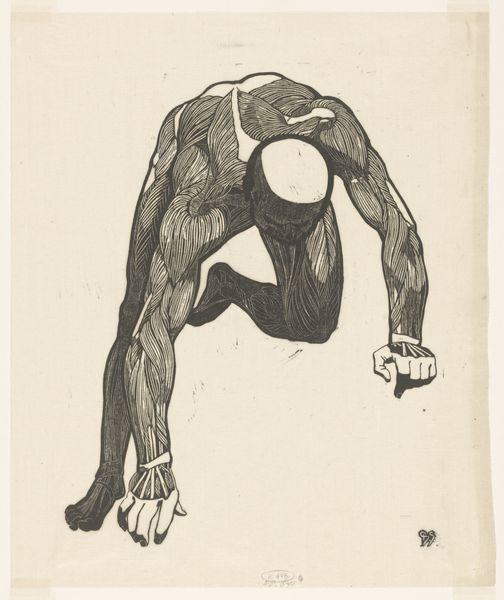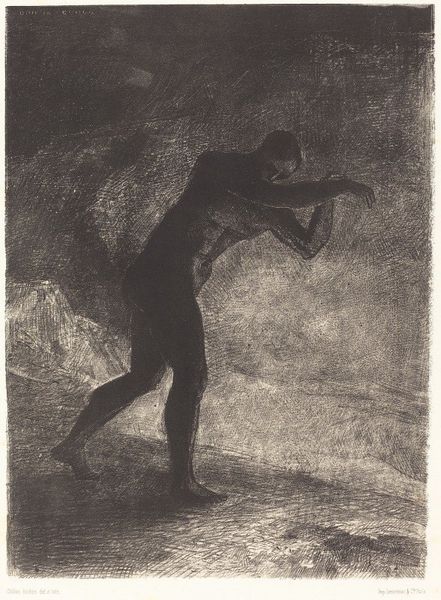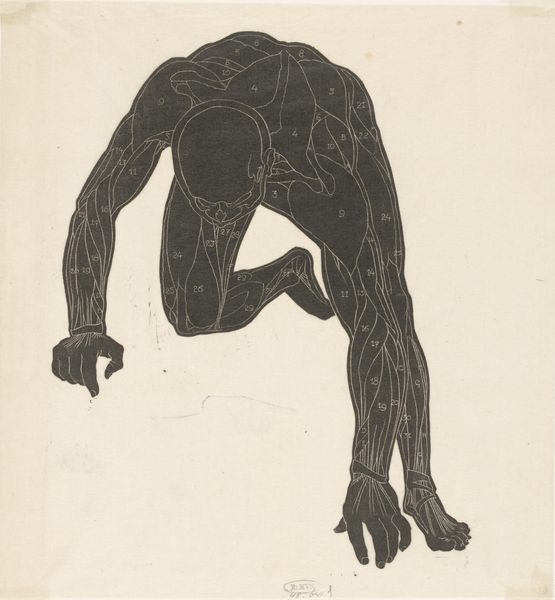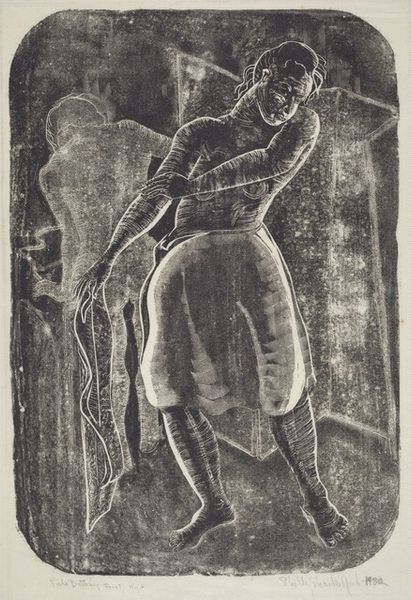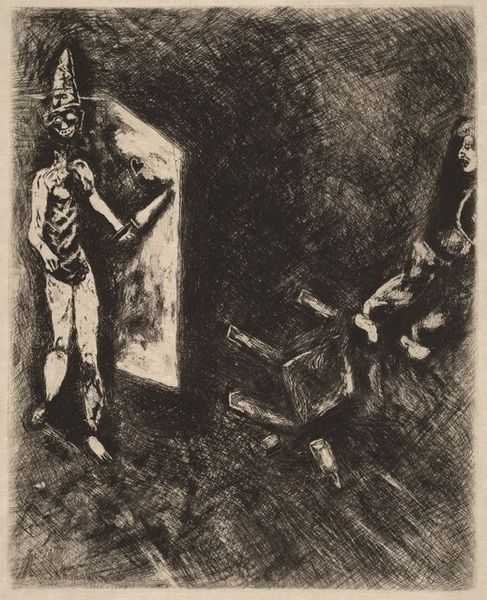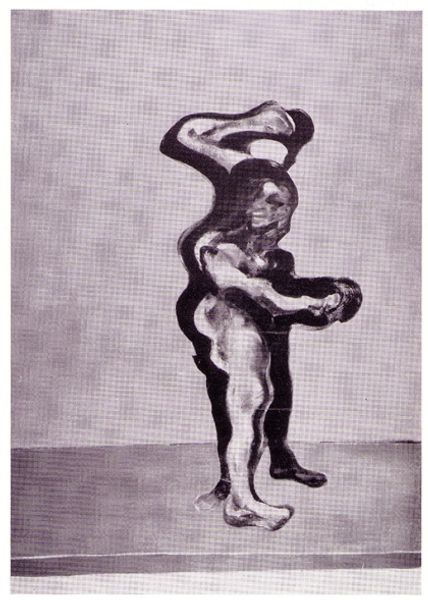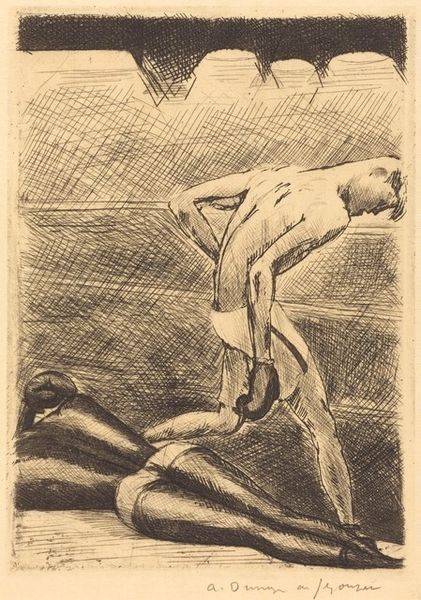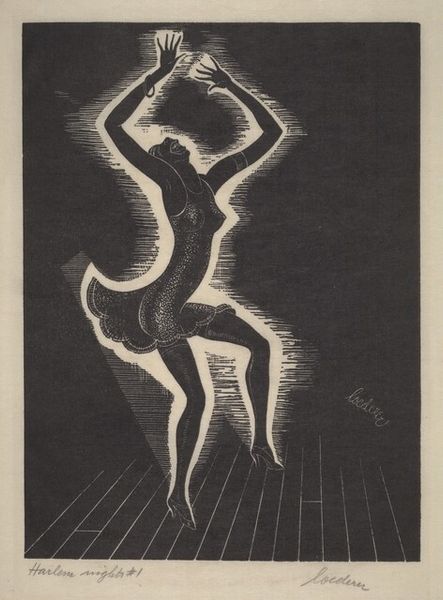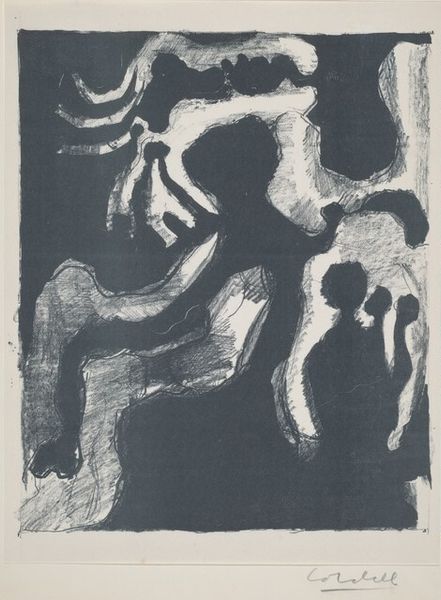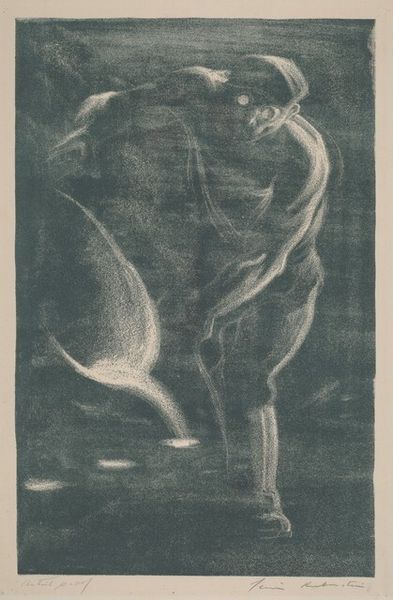
Dimensions: Image: 333 x 254 mm Sheet: 381 x 311 mm
Copyright: National Gallery of Art: CC0 1.0
Editor: So, this is Augustus Hamilton Peck’s “Negro Dancing,” created around 1937. It's a print, and the figure kind of gives off an unsettling vibe... all twisted and elongated like that. What do you see in this piece? Curator: Immediately, I'm struck by the weight of cultural memory embedded within the title and the imagery. "Negro Dancing"—that terminology carries so much historical baggage, doesn’t it? The distorted form, caught mid-motion, what could it signify? Joy, or something far more complex like the distorted performance of identity under duress? Consider the period—the late 1930s—the shadows of Jim Crow were long and stark. Editor: I hadn't thought about the title that way. It seems so… clinical against the emotion in the figure. Is that intentional? Curator: Perhaps. It prompts us to think about how names and representations, how we frame an image, directly impacts its reading, its felt presence. Does the lack of facial detail amplify that sense of a suppressed identity, a body moving, yes, but stripped of individual agency? Think about African masks, where anonymity grants access to something other, something greater than the individual. Does that analogy resonate here? Editor: It does, in a way. Like the figure isn't just a person dancing, but maybe embodies the spirit of a whole cultural experience. Curator: Precisely. And then, there's the Expressionist style Peck employs. The elongated limbs, the shadowy background. Expressionism often serves as a language for trauma, for societal unease. Ask yourself: What psychological landscape is Peck painting for us? Editor: Wow, I will. There is so much more to this image than what initially meets the eye. Thanks! Curator: Indeed! And understanding the layers is key to appreciating the depth and complexity of cultural expression.
Comments
No comments
Be the first to comment and join the conversation on the ultimate creative platform.
